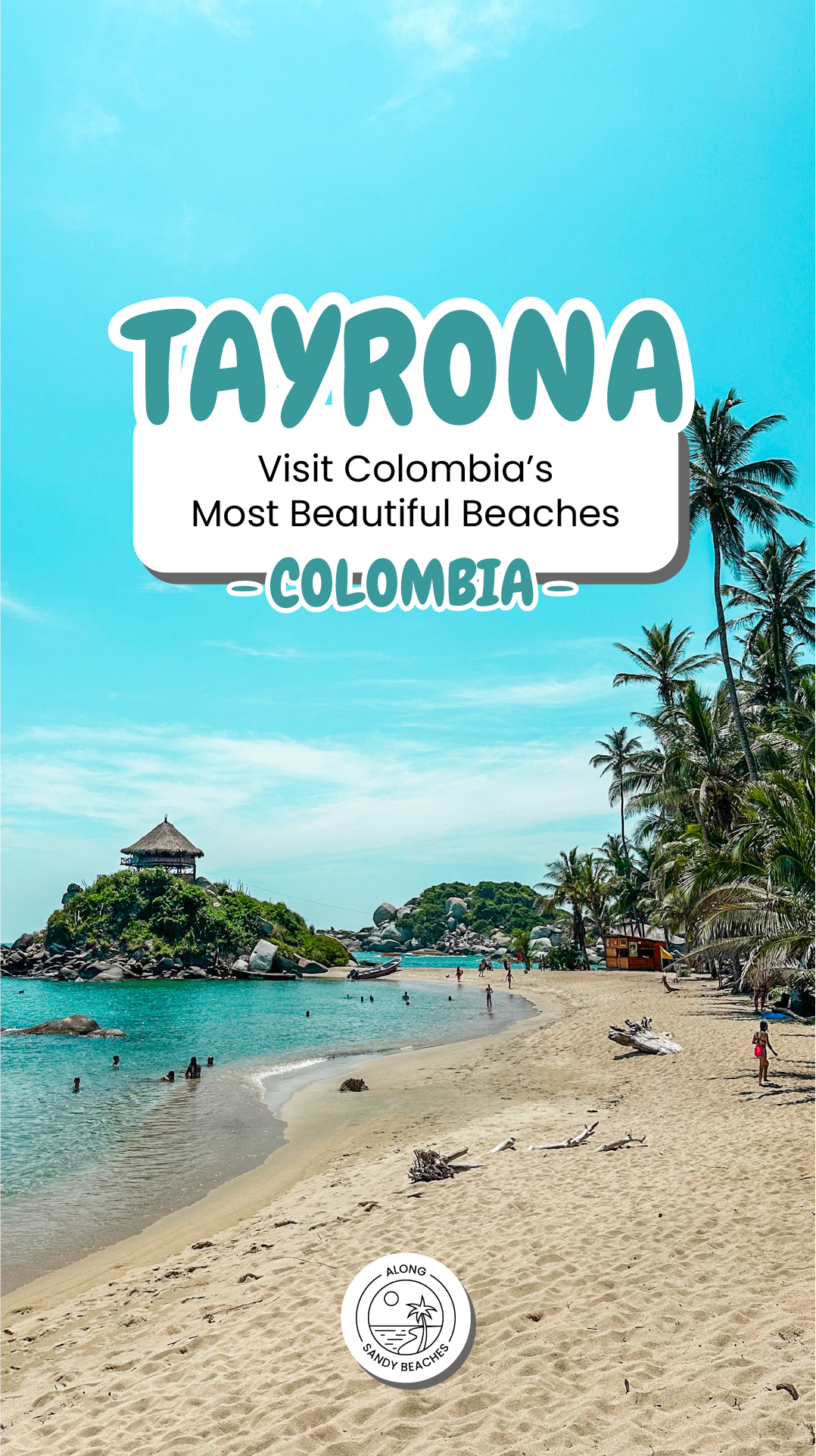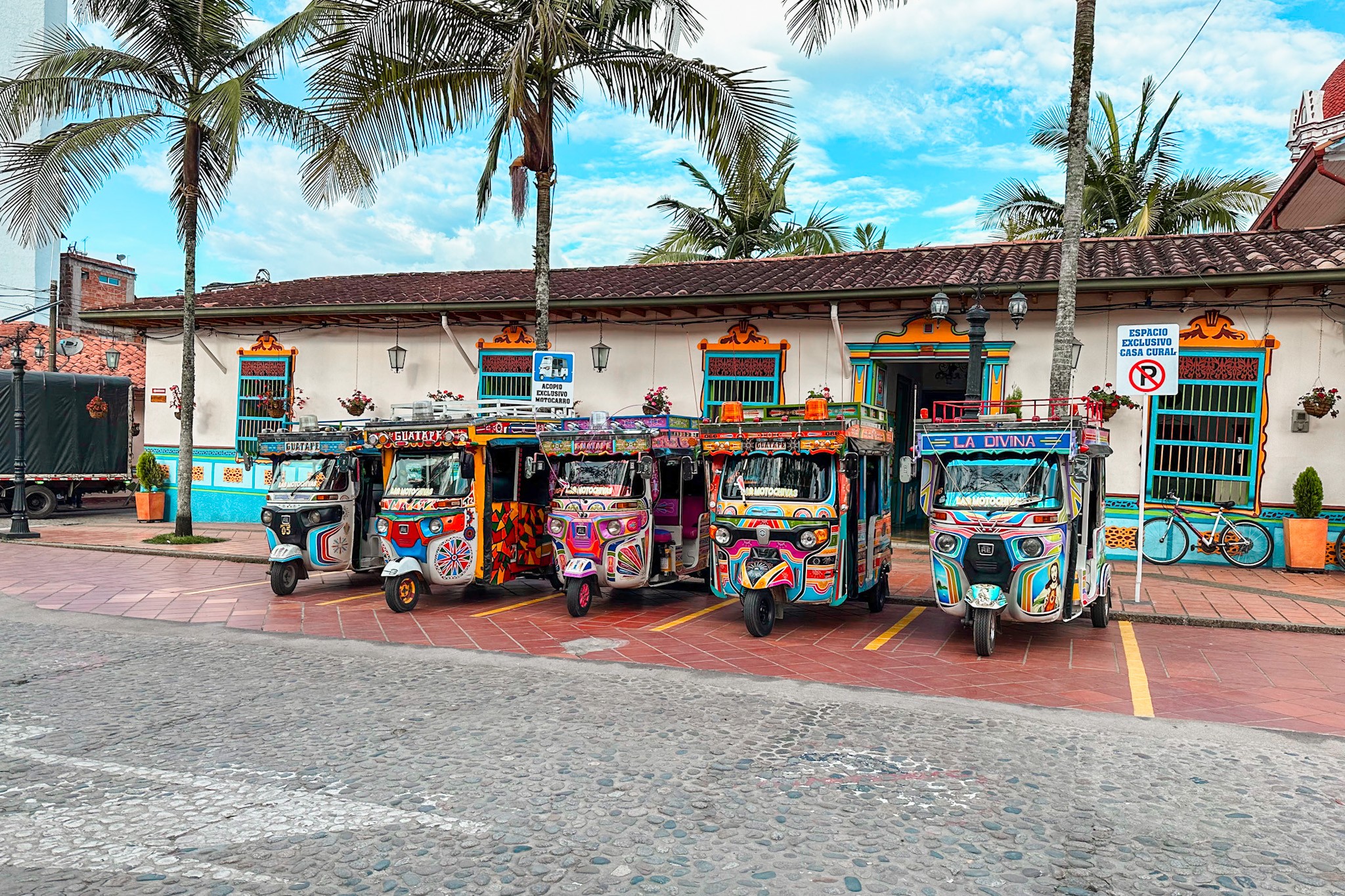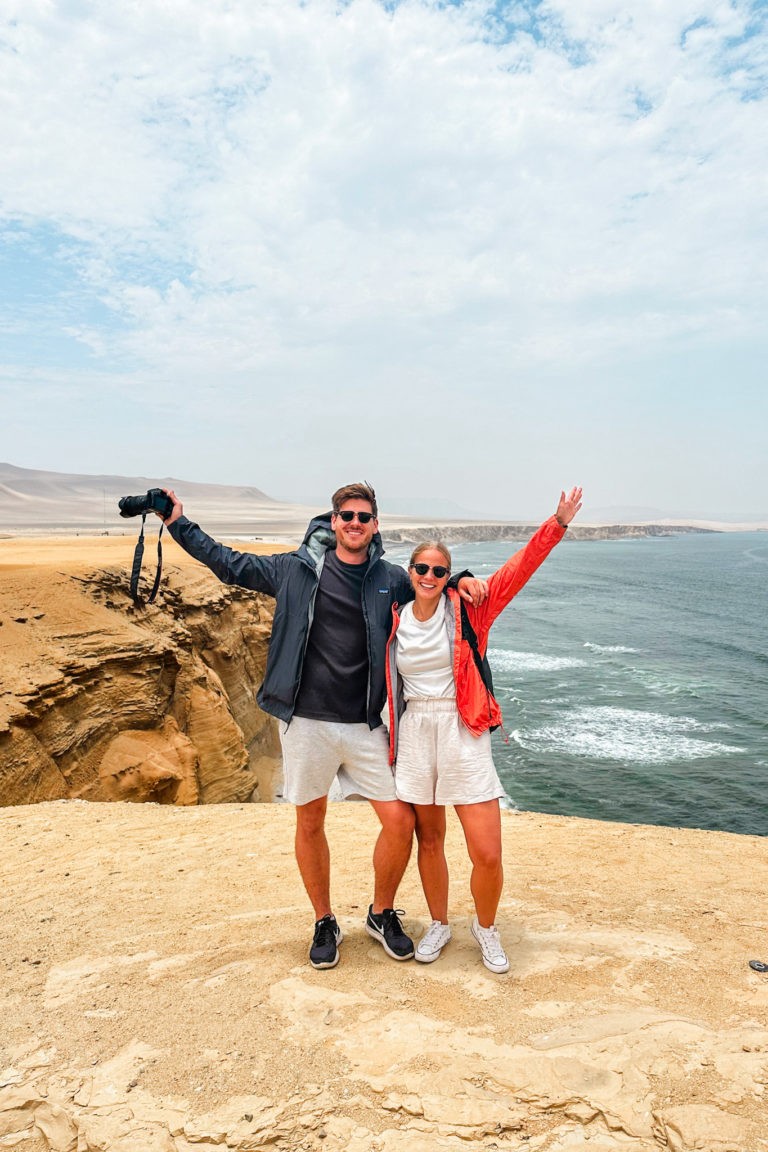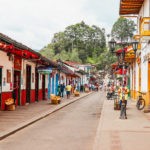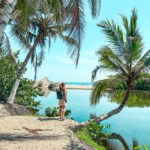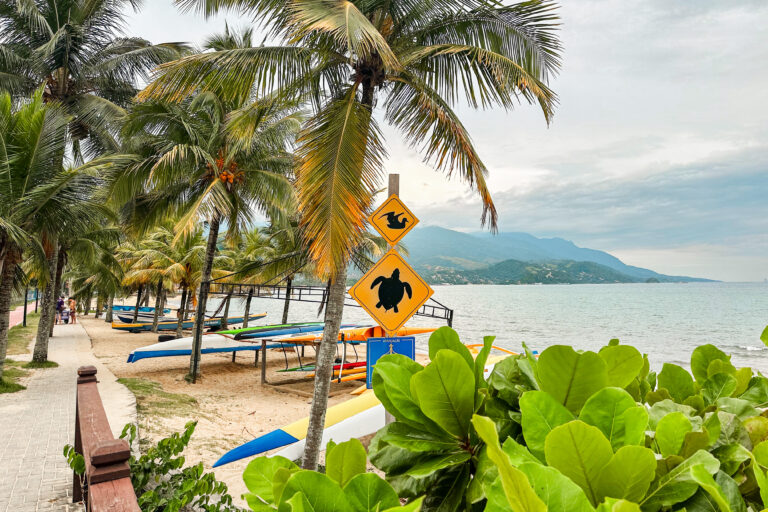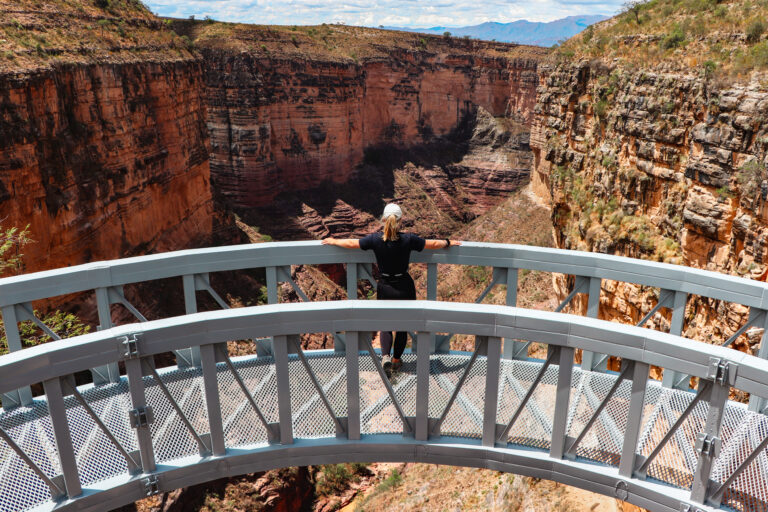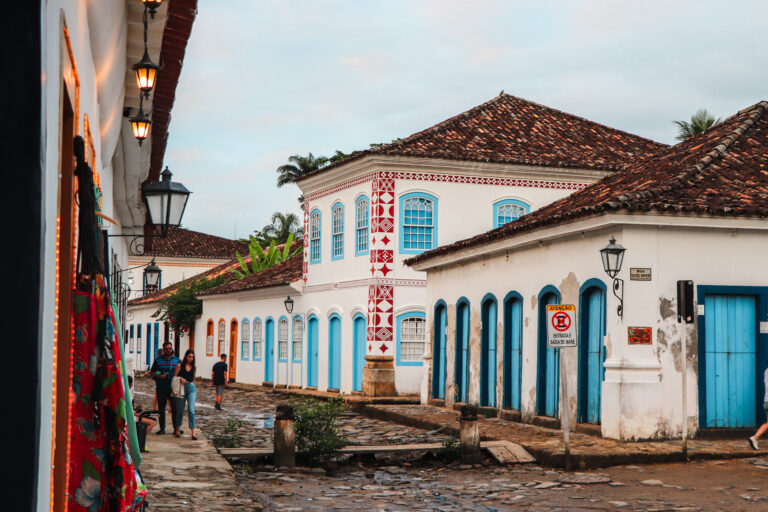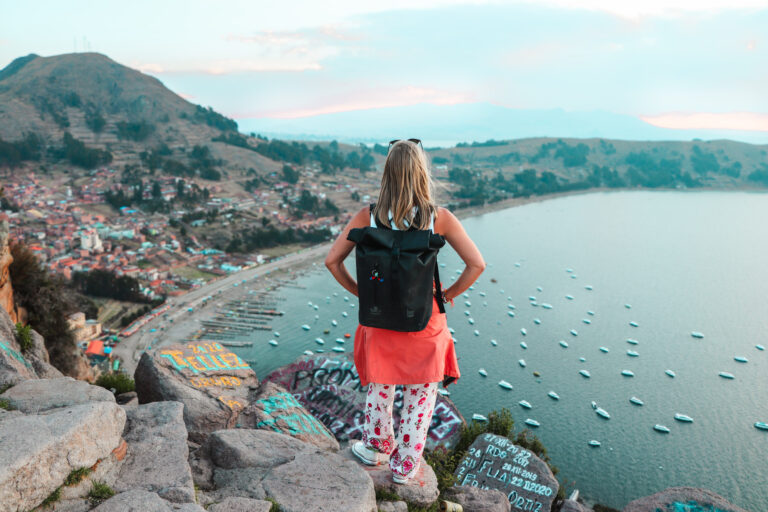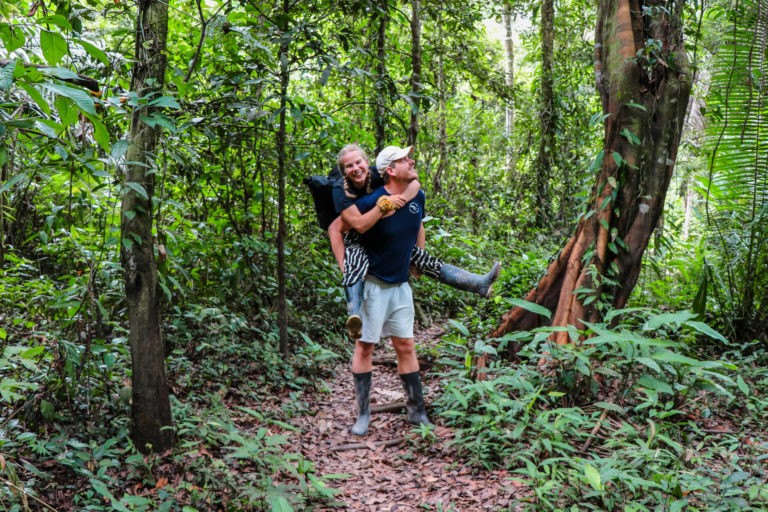On the northern coast of Colombia, where lush green jungle meets the turquoise Caribbean Sea, lies the Tayrona National Park. Our one-day-trip to the park was a mix of hiking through the jungle, breathtaking landscape views, and, most importantly, plenty of relaxation on Colombia’s most beautiful beaches. This stunning destination offers enough exploration to extend your stay for several days.
With our definitive guide to Tayrona National Park we collected all essential information you will need to plan your trip and have an unforgettable stay in Tayrona.
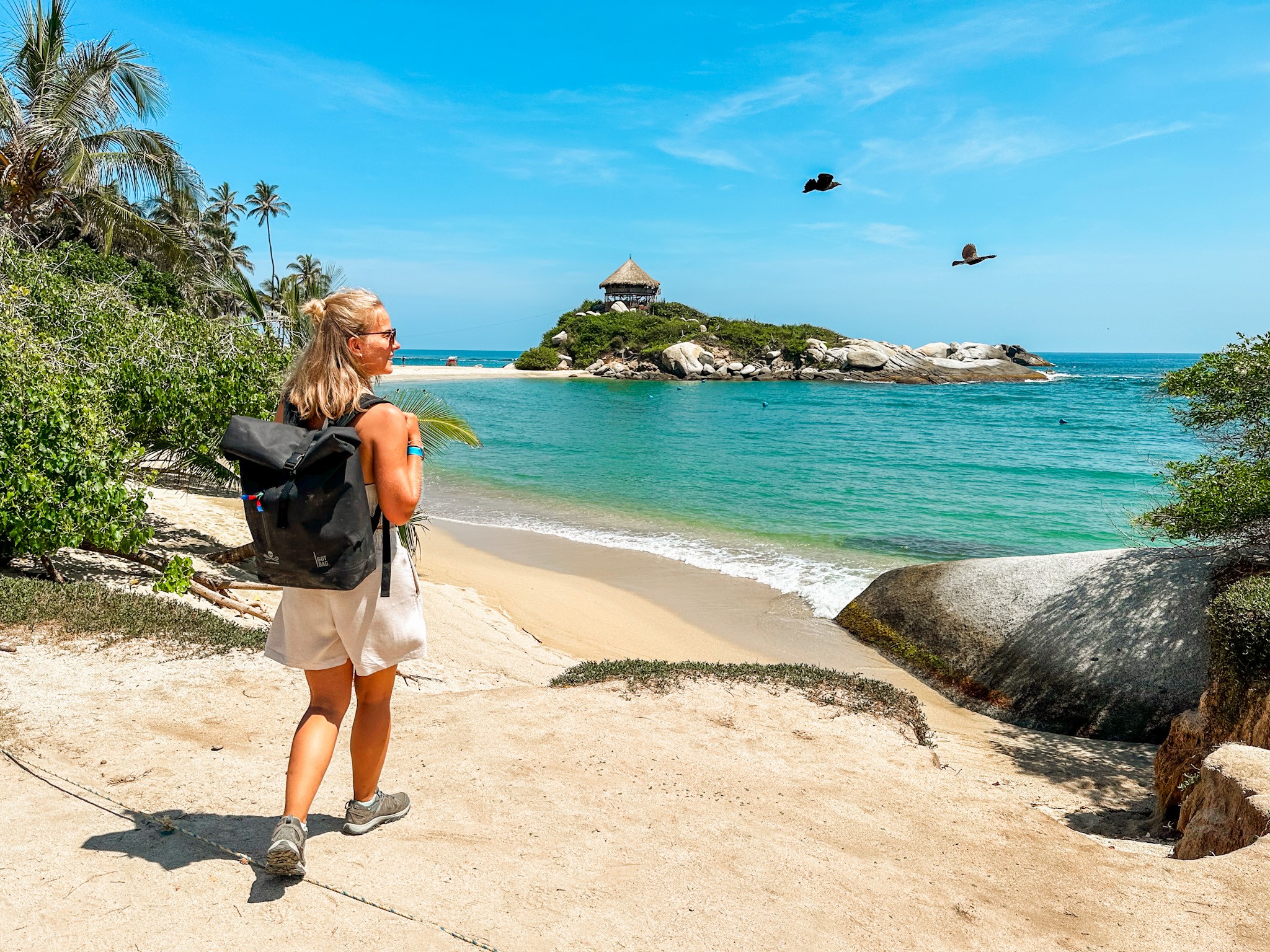
Things to do in Tayrona National Park
Tayrona is a perfect destination for adventure seekers and nature lovers alike. Whether you’re spending multiple days in this park or opting for a quick one-day escape from nearby cities, Tayrona has something for everyone.
As we had already embarked on the Lost City Trek and were staying at the neighboring Mendihuaca Beach, we decided to visit Tayrona for one day only. Still, the park surprised us with its breathtaking beauty through picturesque landscapes, intriguing rock formations, and beautiful hiking trails.
Here, we’ve gathered the absolute best things to do in Tayrona, ensuring your time in this natural wonderland is nothing short of extraordinary.
1. Take a walk in the Park
It is important to know that Tayrona National Park can only be explored on foot. Well, almost. There is an alternative to riding horses, but we strongly discourage supporting animal exploitation in this manner. The trails are well maintained and easy to follow, with a lot of signs. When we hiked through Tayrona we never got lost, so we’re pretty sure you won’t as well.
Along your way, you’ll walk through a dense jungle with trees and giant rock formations surrounding the trail. We were surprised by how large a single piece of rock can be.
When you enter the park from the El Zaino gate, the hiking trail starts a bit further away from the gate. You can opt to hike from the beginning which would take about an hour to reach the starting point or there are also bus shuttles to bring you there. If you decide to take the transfer within the park, which we would recommend, then this will be your starting point (see “What does it cost to visit Tayrona“).
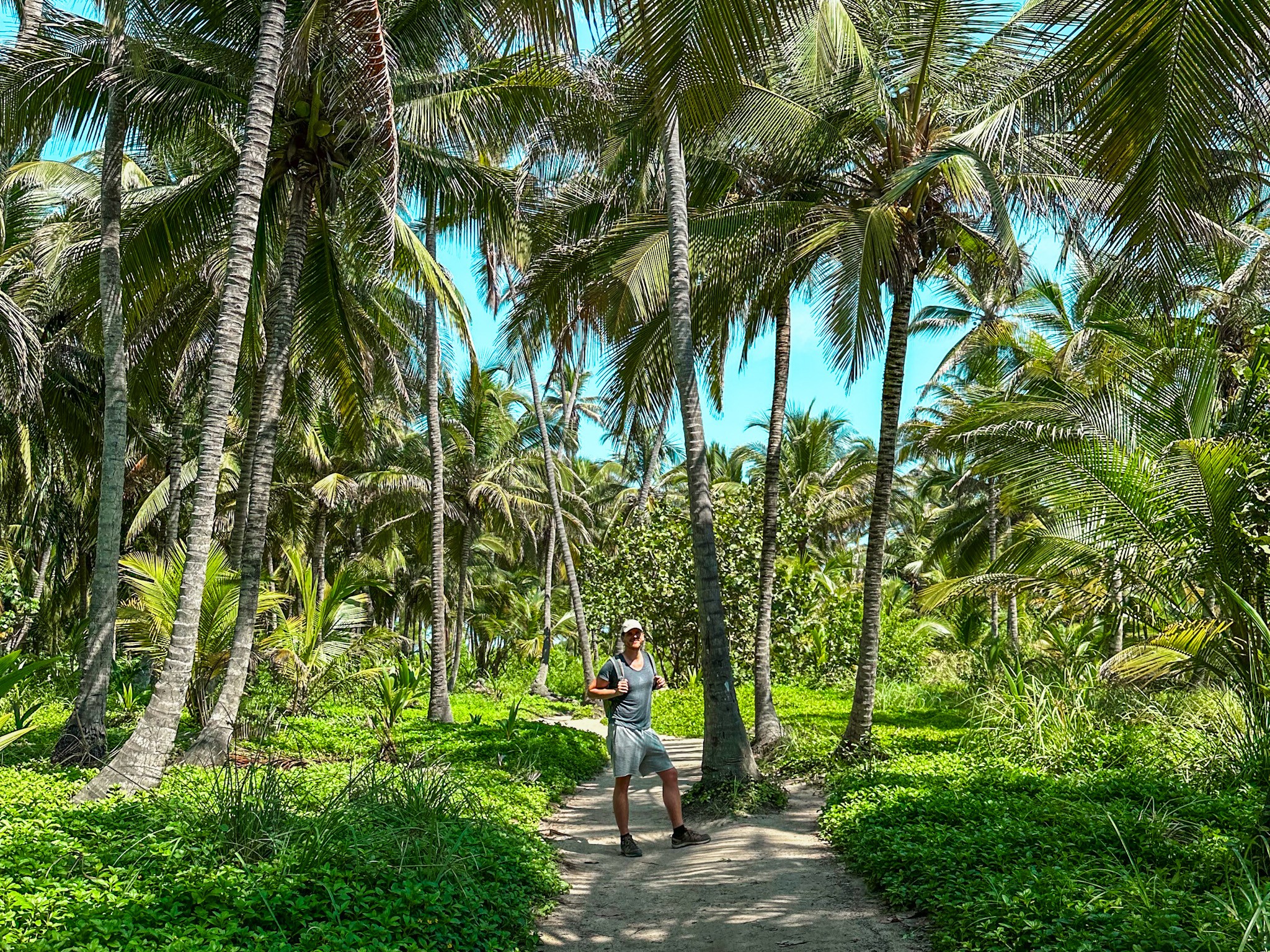
If you follow the path it will take you around 1.5 hours until you arrive at Mirador Parque Tayrona. Make sure you bring good shoes (have your flip-flops and sandals in your backpack), as the trail has some ups and downs – but is doable. So don’t worry if you haven’t climbed Mt. Everest before.
Mirador Parque Tayrona is the first stop on your trail, a beautiful beach with large rock formations around it. From there you can proceed to Canaveral Beach, Arrecifes, Playa la Piscina, and Cabo San Juan – which in total will take you around 30 more minutes.
Once you’ve reached Cabo San Juan, stay there and enjoy the most beautiful beach Tayrona has to offer. Save yourself a place in the shadow and jump into the cool water.
Even though there are hiking trails further into Tayrona National Park, in case you are staying for one day only, we would recommend turning around at this point, as going back will take you another 2 hours of hiking. Keep track of the time and return a little earlier, so that -in case you went to Cabo San Juan right away- you can enjoy the other beaches on your way back.
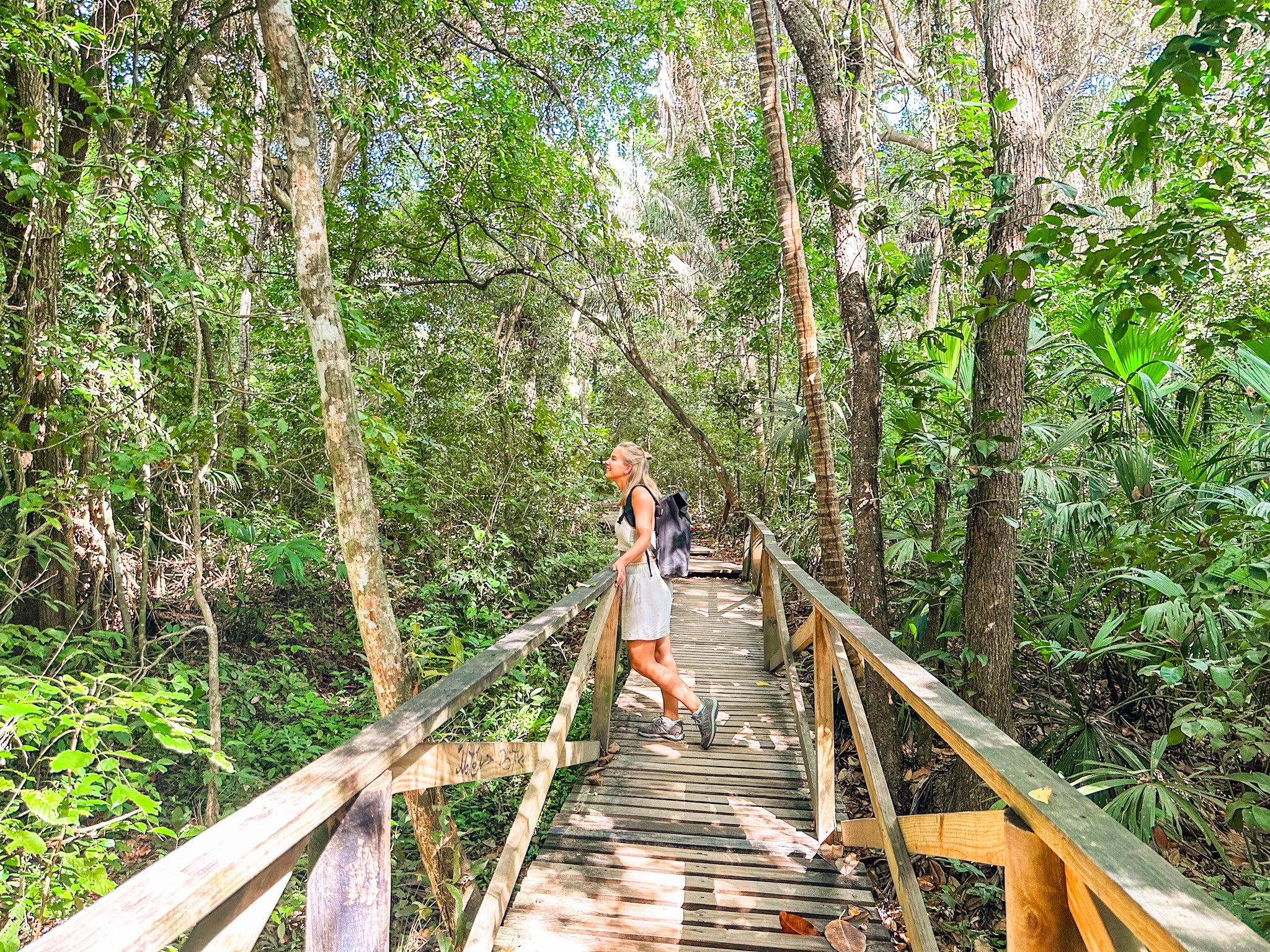
2. Explore Tayrona's Best Beaches
By now, it’s no longer a surprise that the beaches in Tayrona are simply magical. For us, Cabo San Juan was our favorite beach during our trip to Tayrona – but for you, it may be a different one.
On your walk through the park, choose the beach you like the most. Just bear in mind that you cannot swim at some beaches. Indeed several people have lost their lives when ignoring the warnings. So look out for signs and red flags.
The Best Beaches in Tayrona National Park
We’ve visited all of the popular beaches in Tayrona. So here are the beaches we loved the most.
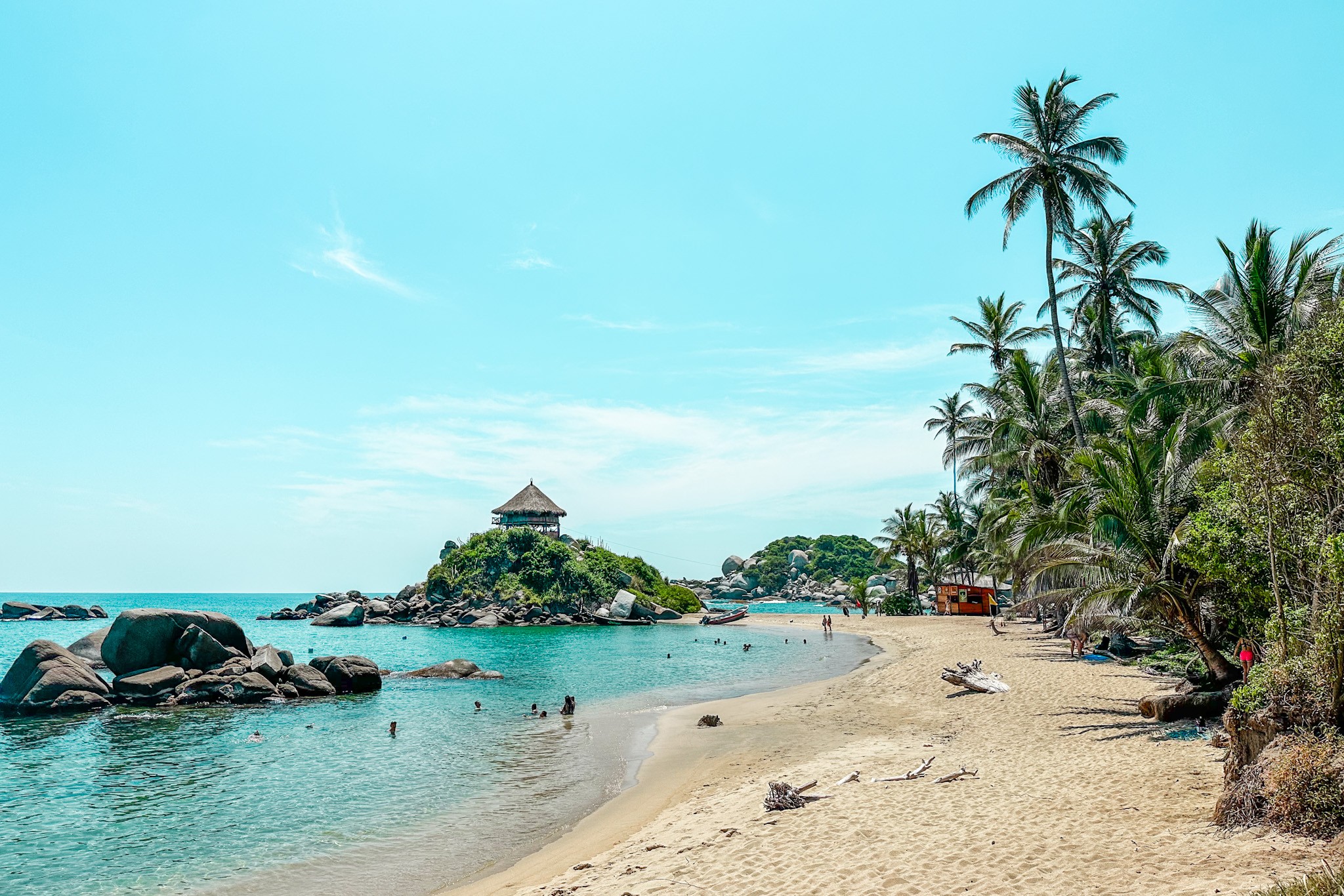
Cabo San Juan del Guia
This is by far the most popular beach. Swim in a bay, have a coconut from the trees, and take a look around from the hut built on top of a giant rock.
You can also camp there, sleeping in hammocks and listening to the sound of the sea while you peacefully fall asleep.
La Piscina
A “swimming pool”-like beach, surrounded by rocks and perfect to have a safe swim.
Castilletes and Canaveral
Located closest to the El Zaíno entrace of Tayrona, these two beaches are the most quiet ones within the park. Not too crowded and the perfect spot to relax and have a swim. You will come along both beaches when following the main trail.
Arrecifes
Playa Cristal
As the name already reveals, a beach with the crystal clearest water and the perfect spot to cool down and snorkel around.
Playa Brava
A remote beach accessed via the Calabazzo entrance of Tayrona, but not suitable for swimming, as the sea is quite rough.
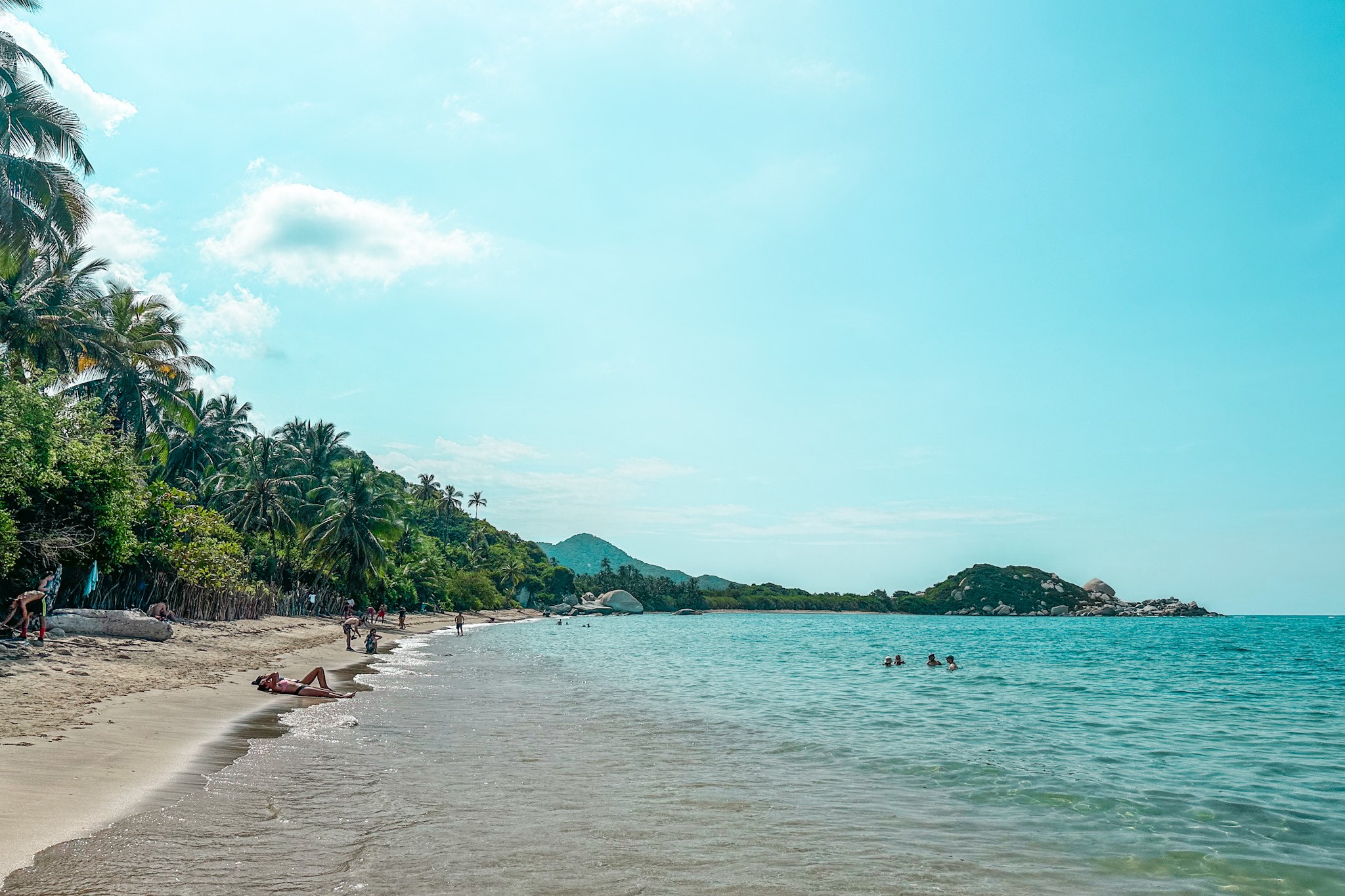
3. Spot Wildlife
We’re not the best wildlife spotters. And if you follow us long enough, you know our struggles – especially when it comes to spotting birds. However, one thing is guaranteed, when walking through the jungle of Tayrona, you will hear a lot of different bird songs along your way. We felt that we finally arrived in nature.
Tayrona National Park is a popular destination for bird watching. More than 300 different species are living in the park, among plenty of monkeys and reptiles.
When we were hiking in the park, we came across a lot of interesting salamanders, each one of them having a different color. We saw colibris and even some brown boobies (yes, that’s their real name – we looked that up!).

How to get to the Tayrona National Park?
Getting to the Tayrona National Park is no big deal. The park is a direct neighbor to Santa Marta, Taganga, and Palomino, making it easily accessible by bus, taxi, or boat.
If you decide to go by bus or taxi, you need to know that there are two entry gates to the Tayrona National Park (El Zaíno and Calabazo). El Zaíno is the main gate to the park, while Calabazo is the less popular entrance. We’d recommend you choose the El Zaíno gate to visit all of the popular beaches in Tayrona. Note that you cannot enter one gate and leave at the other, as they are too far apart.
Let’s quickly discuss the options for how to get to the park.
From Santa Marta to Tayrona
If you are in Santa Marta, head to the local bus station and ask for a ride to the Tayrona National Park. Locals will help you find the small ticket office to buy your ticket and board the right bus.
Buses from Santa Market to Tayrona leave every 20-30 minutes and a ticket costs around 7000 COP (≈ 2 USD). The ride from Santa Marta to Tayrona takes around 45-60 minutes. Don’t forget to tell your driver to drop you off at the park.
Relevant Reading
From Taganga to Tayrona
If you are in Tagangea you can take a metered taxi from Taganga to the bus station in Santa Marta or choose to take a boat to the Tayrona National Park.
Boats leave from Taganga every morning. Head to the coat to get yourself a transfer and don’t forget to take some cash with you.
A boat ride from Taganga to the Tayrona National Park costs around 50000 COP (≈ 12 USD) – 80000 COP (≈ 19 USD) for a 50-minute ride (one way). Don’t forget to take some cash with you, as you need to pay the park entrance fees on arrival too.
If you easily get seasick or have a weak stomach, we’d recommend you not to take the boat. Due to the currents and climate conditions, the sea is quite rough and it will be a bumpy ride!
From Palomino to Tayrona
Buses from Santa Marta that pass Tayrona head to Palomino. They operate between both cities along the coastal road. You can either take the bus from the local bus station in Palomino or wave at any bus next to the road connecting Palomino with Santa Marta.
The bus ride from Palomino to Tayrona takes around 60 minutes and costs around 10000 COP (≈ 2 USD). You can pay the driver in cash directly.

When to arrive and leave Tayrona?
It’s best to arrive early at the Tayrona National Park to avoid the crowds and waiting times at the entrance. The park opens its gates at 8 a.m., so we’d recommend you arrive around 15 minutes in advance.
Keep track of your time, especially if you are visiting Tayrona Park only for a day, as the park closes already at 5 p.m. and you’ll have a pretty decent walk from the beaches to the entrance.
Another thing to note is that Tayrona Park is closed every year for a certain time to allow indigenous people to perform rituals and the park to recover from tourism. The closure times vary from year to year, so make sure to look them up at the official Tayrona Park website, before you plan your trip.
Tayrona Park Closure 2024
In 2024, Tayrona Park is closed on February 01- 15, June 01-15, and October 19 – November 02. During this time the local indigenous communities perform rituals in the park.
What does it cost to visit Tayrona?
Currently, the ticket to enter the Tayrona National Park costs 87000 COP (≈ 21 USD) during the high season and 73500 COP (≈ 18 USD) during the low season.
In addition to the entrance fee, there is a small but obligatory insurance which will cost you an additional 6000 COP (≈ 1 USD).
While it’s possible to pay the entrance fee by card, bring some extra cash to buy some snacks and drinks inside the park.
Once in the park, you’ll have the option to take a mini-van transfer form the gate to the starting point of the hiking trail. The transfer costs 5000 COP (≈ 1 USD).
We totally recommend you to take the transfer, as within the 1-hour walk you wouldn’t see anything interesting anyway. Especially if you are visiting the park for one day only, it will leave you more time to enjoy the beautiful beaches. And the hiking trail is still long enough for you to get enough movement in the day (it’s 6 km to the Cabo San Juan beach).

What to pack for Tayrona?
The two most important things to pack for Tayrona are your passport and Yellow fever vaccination, as otherwise, chances are you will not be allowed to enter. While they didn’t ask for our vaccination card, we wouldn’t recommend you risk it.
The third most important thing to pack for Tayrona is water. A lot of water. Expect the climate to be hot and humid, and we promise, you’ll sweat a lot while going up and downhill to the beaches. Try to buy some water from the shops near the entrance, as prices inside the park are higher than usual.
Another thing to not forget is extra cash. Especially if you want to spend more than a day in the park, then take a fair amount of cash with you. Once inside the park, there’s no opportunity to pay with a card as there’s no cellphone reception.
Besides those things, bring a lot of sunscreen, as you would when going to any beach.
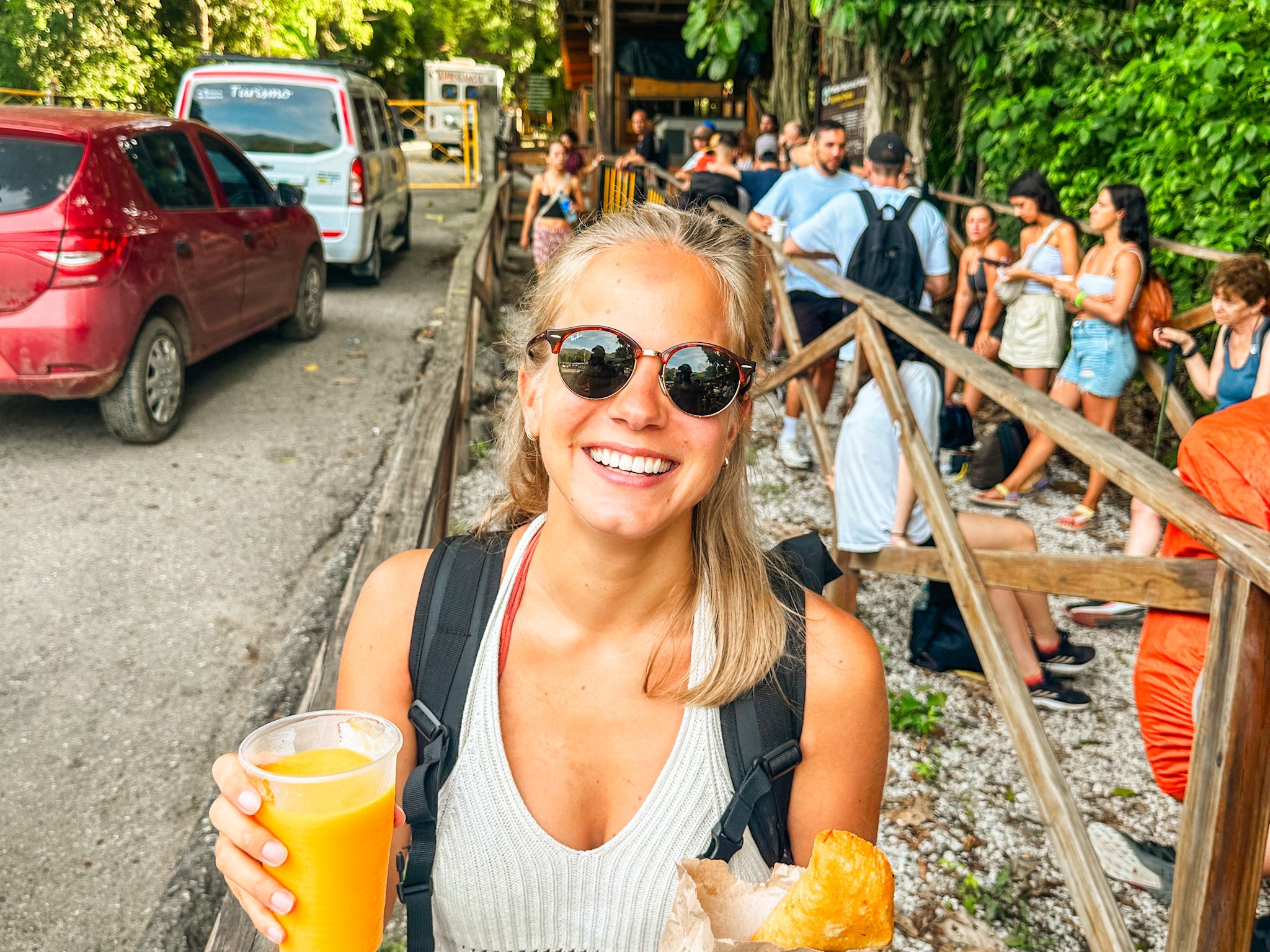
How to hike in Tayrona?
From the start of the hiking trail, you can’t miss the route to the famous beaches. There is only one, but well-maintained, hiking trail and you will find a lot of signs along the way. Bring enough water with you, as for the hike to and from the beaches there is some elevation to overcome. Following the route, you will pass by all the famous beaches.
We would recommend directly hiking to Cabo San Juan del Guida, the last beach and also the most beautiful one. That way you arrive early before the crowds and can save yourself a decent spot in the shadow. Depart a little earlier, so you can visit the other beaches on your way back. This also will help you get your timing right to exit the park in time.

Where to stay in Tayrona National Park?
Staying inside the Tayrona National Park is a great way to extend your time within Tayrona, allowing you to enjoy the park after the crowds have left. You can relax and spend the evening at the beach, without worrying about returning to the gate in time for closure. The accommodation options range from sleeping in hammocks to eco huts.
Make sure you reserve your accommodation before you enter the park, as you will get a bracelet at the gate that allows you to stay at the reserved accommodation.
The most well-known campsite locations in Tayrona are Playa El Cabo (next to Cabo San Juan Beach), Arrecifes (next to Arrecifes Beach) and between Canaveral and Arrecifes.
Tented Camping in Tayrona
Spending the night in a tent is a good sweet spot between an eco hut and sleeping in a hammock. You don’t need to pay the higher prices for a hut but still have good protection from flies, mosquitoes, and rain. Also, you are sleeping a little more comfortably than in a hammock (but that’s on you to decide).
Eco Lodges in Tayrona
If sleeping in a hammock or camping in a tent is nothing for you, then you have the option to stay a one of the eco lodges and huts in the Tayrona National Park. The most luxurious option, but it also requires a little more budget. The best accommodation options for lodges can be found near Canaveral.
Hammocks in Tayrona
Where to eat in Tayrona National Park?
There are many options to buy food and drinks when inside the Tayrona National Park. So you don’t need to carry everything with you.
Small vendors along the trails sell water and snacks to energize you along your hike. There are also local restaurants and little shops available next to the beaches, where you can have fresh seafood or a cold beer as your hiking reward.
Just make sure to bring cash, as you can’t pay with your credit card in the park.
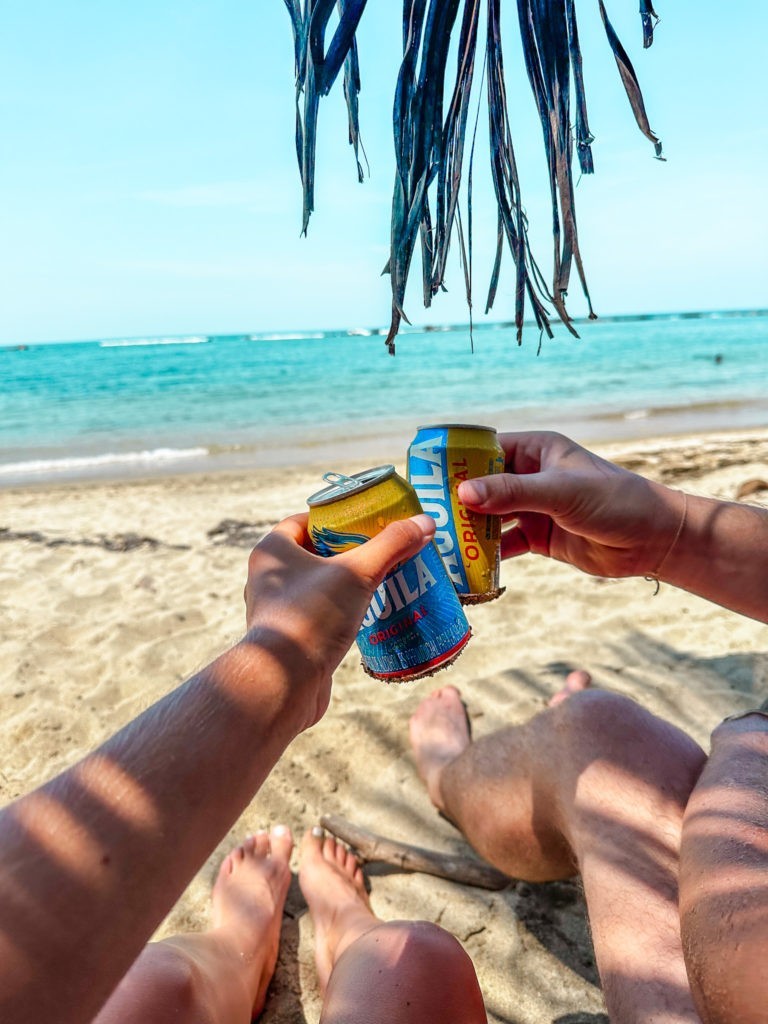

When is the best time to visit Tayrona National Park?
The best time to visit the Tayrona National Park is during the dry season between December and March and during the shoulder seasons between April and June when rainfalls are rare.
Expect temperatures around 31°C – 32°C (88°F – 90°F) during the day and 22°C – 24°C (72°F – 75°F) at night. Keep in mind that, as the Tayrona National Park is in the Sierra Nevada region, the humidity will be pretty high making it a little more challenging to hike.
We visited the Tayrona National Park in August and we didn’t encounter any rain, but a lot of sun.
Here’s our temperature breakdown for the Tayrona National Park for the year.

